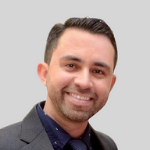For more than a billion people worldwide, the simple lack of a legal form of identification (ID) is excluding them from life-enhancing digital and financial services. Almost half of those living without an ID are in Sub-Saharan Africa. The need to provide digital identities has never been clearer and, as we argued in an earlier blog series, mobile biometrics can play a key role in lifting the barriers.
Biometrics technology can unlock access to services for people without proof of ID, provide better service to user groups that are otherwise hard to reach (such as persons with disabilities or less literate populations) and promote financial and digital inclusion. Not only that, but biometric techniques can also help reduce fraud and improve digital security for consumers.
However, for biometric solutions to be viable in low- and middle-income countries (LMICs), they must suit the local context. For a customer base that often uses low-end mobile devices, biometric solutions must work on basic feature phones that may have low-resolution cameras and no fingerprint scanner. For an industry operating on low-margin economics, the investment in these solutions needs to be affordable to justify the business case.
Mobile operators can play a key role in supporting a digital identity ecosystem.
Many are recognising opportunities to innovate their services with mobile biometrics for customers in LMICs. One such operator is Orange. With 70 million customers in 17 markets, Orange is one of the leading operators on the African continent. Orange provides telecom and financial services that are vital to national infrastructure and are leaders in providing inclusive innovations to underserved user groups.
In a joint collaboration, Orange and the GSMA Inclusive Tech Lab have developed a demonstration of how mobile biometrics can enhance key use cases of Orange Money, Orange’s mobile money service in Africa.
Orange had the opportunity of experiencing how the use of voice recognition could enhance the quality of customer service and the security of Orange Money, especially for customers in a low- or middle economic category. Drawing on their market experience, Orange identified three use cases to trial the potential of voice recognition: resetting a mobile money PIN number, cashing in and cashing out at a mobile money agent and performing a transaction at a merchant location. In all these scenarios, customers could execute and authorise these sensitive actions and transactions simply with the use of their voice.
The solution needed to work for low-income customers with basic devices, including feature phones with USSD channels, and be available in their local language. Working with these business requirements, the GSMA Inclusive Tech Lab set out to develop an open-source asset that would enable Orange to trial the use of voice recognition to authenticate customer identities in these different use cases and conditions.
The solution was built using Biometrics for All (B4LL), a multimodal biometric showcase launched in 2021. B4LL enables digital service providers to test different biometric solutions for multiple use cases in emerging markets in a safe environment.
When the user initiates any of the use cases, the solution triggers an inbound call to the user. They are then asked to repeat a passphrase, which is used to authenticate the user and allows them to approve their transactions. Let’s look at some examples to understand how this works in practice.
Many mobile money users are accustomed to making payments at a merchant location when buying goods. In a typical scenario, a transaction is initiated by dialling a USSD number or scanning a QR code, and the verification process begins when the user enters a PIN code. In our trial, the merchant payment could be initiated in various ways, including over SMS, USSD, QR code or by calling a call centre. Then, the customer receives a phone call to their device and, simply by repeating a passphrase, can complete the purchase.
Here is another example. Consider a scenario in which, for any reason, a customer needs to reset their PIN. In the trial, the user can initiate this action by sending an SMS or dialling a USSD code, after which they receive a call to proceed with voice authentication. Once verified, the user can input the new PIN into the system safely and conveniently. The solution was tailored to Orange’s needs.
“Orange is a global leader in taking mobile financial services to the underserved in emerging markets and we want our customers in low- and middle-income countries to enjoy the same service levels and smooth experience that our customers in developed markets do. The possibility of trialling biometrics authentication helps us to explore our ambitions in this space. We want our customers to have access to financial services and be able to enjoy our services in a seamless and friction-free environment.”
Cedric Lemaire, Head of Orange Money Business, Orange Group
For instance, it was created in French and English, the primary languages spoken in Orange’s markets. However, the B4LL solution can be readily customised to other specific market requirements. For example, the use of text-to-speech solution allows the passphrases and the call centre voice to be easily adapted to different languages and dialects. Other parameters can also be adjusted, such as the use of different USSD patterns (starting with * or #) and security thresholds for transaction values (for example, to proceed with a cash-in over $200, the user must use voice recognition as second-factor authentication).
Do you want to know more about this project and the use of mobile biometrics? Stay tuned, as we will be making this project open source in the coming months. If you think this type of solution could help to improve security, the customer experience and digital inclusion in your market, we can support you.
Together with industry players, the Inclusive Tech Lab develops white-label mobile technologies with a focus on facilitating services for the underserved in emerging markets. Visit GSMA Inclusive Tech Lab or email us at [email protected].



